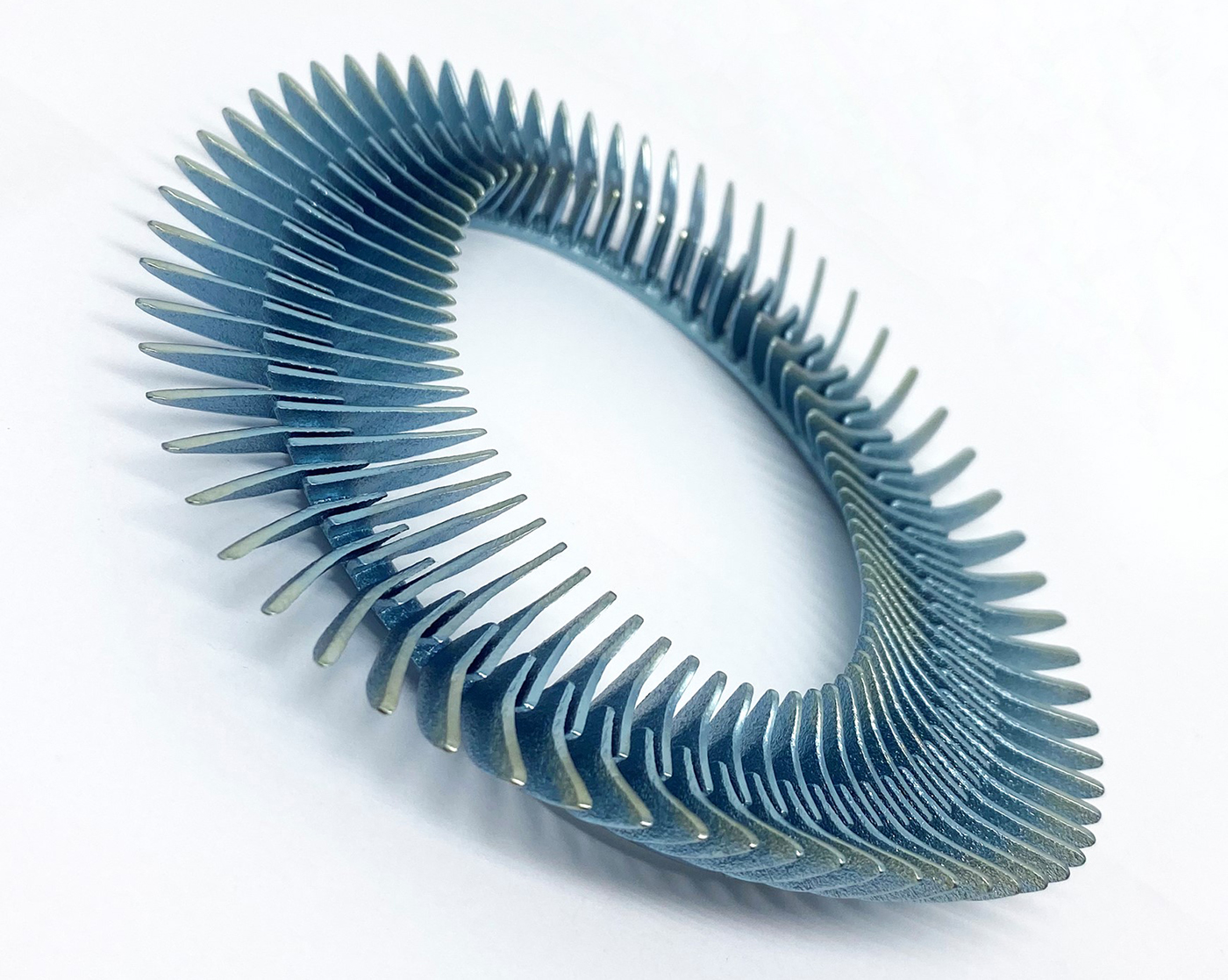Additive Manufacturing in the jewellery industry: exploring the potential of platinum and titanium
Metal AM offers the jewellery industry significant creative and commercial opportunities. One such opportunity is the production of platinum and titanium jewellery by Laser Beam Powder Bed Fusion (PBF-LB), a process described as a "match made in heaven" for these metals. This technology offers jewellery designers advantages that include greater creative freedom, the precise control of weight, and a path to scale-up production. Here, Michela Ferraro explores the status of AM for jewellery manufacturers and highlights innovative and critically acclaimed pieces produced by the technology. [First published in Metal AM Vol. 9 No. 4, Winter 2023 | 10 minute read | View on Issuu | Download PDF]
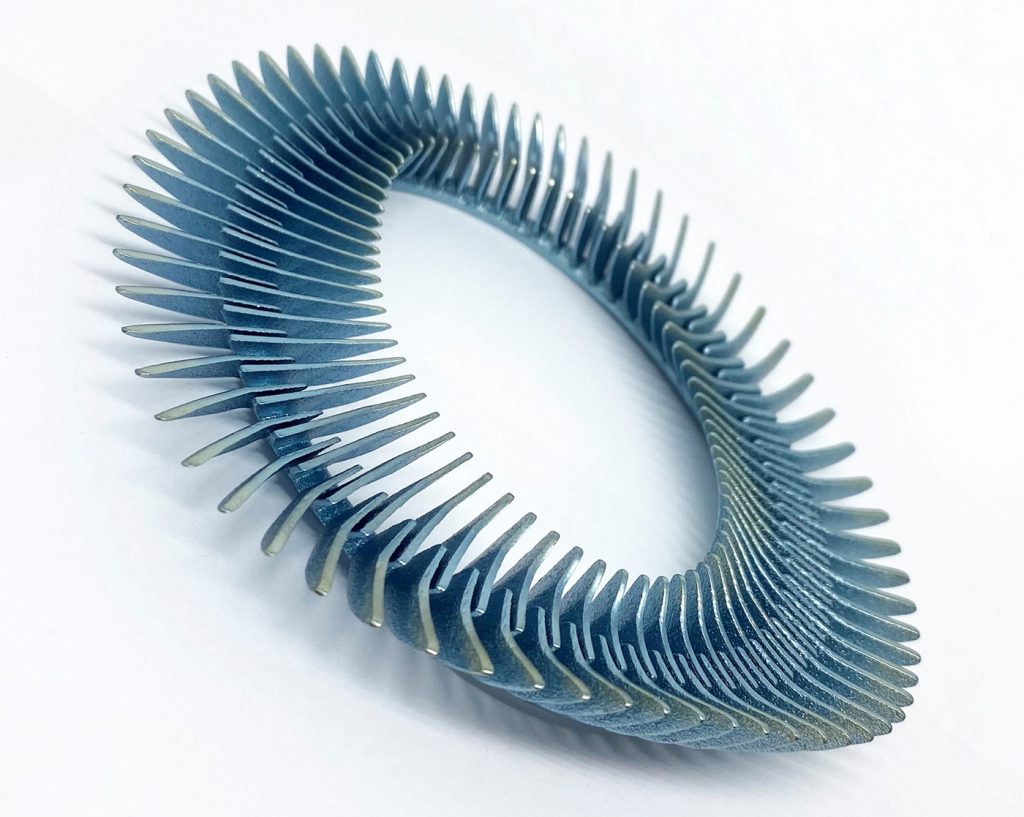
Additive Manufacturing has been almost effortlessly integrated into the jewellery industry’s manufacturing workflow as a process for making complex forms for casting jewellery using wax or resin. The shift from a handmade process to a digital methodology to create casting forms is, to all intents and purposes, now crucial in order to remain competitive. So, whilst there has been no hesitation about the integration of wax or resin AM as a step in enabling jewellery manufacturers to scale up production, the ’direct’ processing of precious metals by Additive Manufacturing has been embraced far more slowly.
My previous article ‘Innovation and differentiation: Precious metal Additive Manufacturing in the jewellery sector’, published in the Summer 2020 issue of Metal AM [1], largely described the evolution of metal AM in the jewellery sector. The article highlighted how the precious metal industry tried to replicate the successful experiences of other industries, such as aerospace and medical, where metal AM had proved – for the right applications – to bring numerous advantages. Examples might be value gains through a combination of the lightweighting of parts, the creation of parts with improved functionality and greater complexity, the production of parts on-demand, with more efficient material use and, often, in a greener manner. However, when it came to jewellery, the technology in its early form was not providing the same results as conventional processes, often resulting in precious metal AM components that fell below desired standards, or that were simply too expensive to be a viable alternative for well-established jewellery strategies and markets.
One of the biggest attractions of Additive Manufacturing for precious metal jewellery is that it enables manufacturers to better control the weight of products, an undoubtedly cherished ability considering the price per gram of gold and platinum and the relative impact on the retail price. What, however, raised doubts and lead to dampened enthusiasm for the technology was the path of implementation. As mentioned, the early adoption of metal AM by jewellery designers mimicked what had happened in so many other industries: testing metal AM use cases by transposing already successful designs created for manufacture by traditional processes to AM. Inevitably, these results weren’t entirely convincing.
Whilst precious metal AM remained well esteemed by engineers, product, and production teams, with a few exceptions it struggled to make headway amongst earlier adopters. This was due in part to the lack of a convincing new design language, new codifications, that could leverage the true creative freedom and commercial potential of the technology. Very few designers could truly harness metal AM’s potential and translate it into innovative jewellery concepts that couldn’t be manufactured by conventional routes. Often the available manufacturing technologies – the AM machines – were perceived as too technical, resulting in designers failing to take advantage of the new technology enough to result in something unique. Intertwined with this is the fact that customers generally aren’t interested in the processes as much as the design, feel, comfort and price of the piece.
Materials: a change of focus brings new opportunities
The focus of metal AM in the jewellery industry has primarily been gold, as it has historically been the main and most widely used metal for jewellery around the world. The reasons for this go beyond the material’s intrinsic value and move into less tangible areas of importance, such as tradition and culture. Consequently, designs are mainly created and developed for traditional techniques which still have a stronghold in the industry, given gold’s heritage. When it comes to tailored pieces for certain novel purposes, metal Additive Manufacturing can assist, but its use remains the exception rather than the rule for scaling up. The reasons remain the same: in a comparison between historical processes with hand finishing, metal AM rarely delivers a persuasive solution.
Despite this, a number of innovative examples have been created and promoted in international jewellery exhibitions, increasing interest in, and research related to, metal Additive Manufacturing. One early example is Nuovi Gioielli’s patented metalPixel, a precious metal mesh created in 2014 which mimicked fabric. This sort of innovative and unique design showcased what extreme solutions could only be achieved with metal AM. An example of Nuovi Gioielli’s AM pieces is shown in Fig. 2.
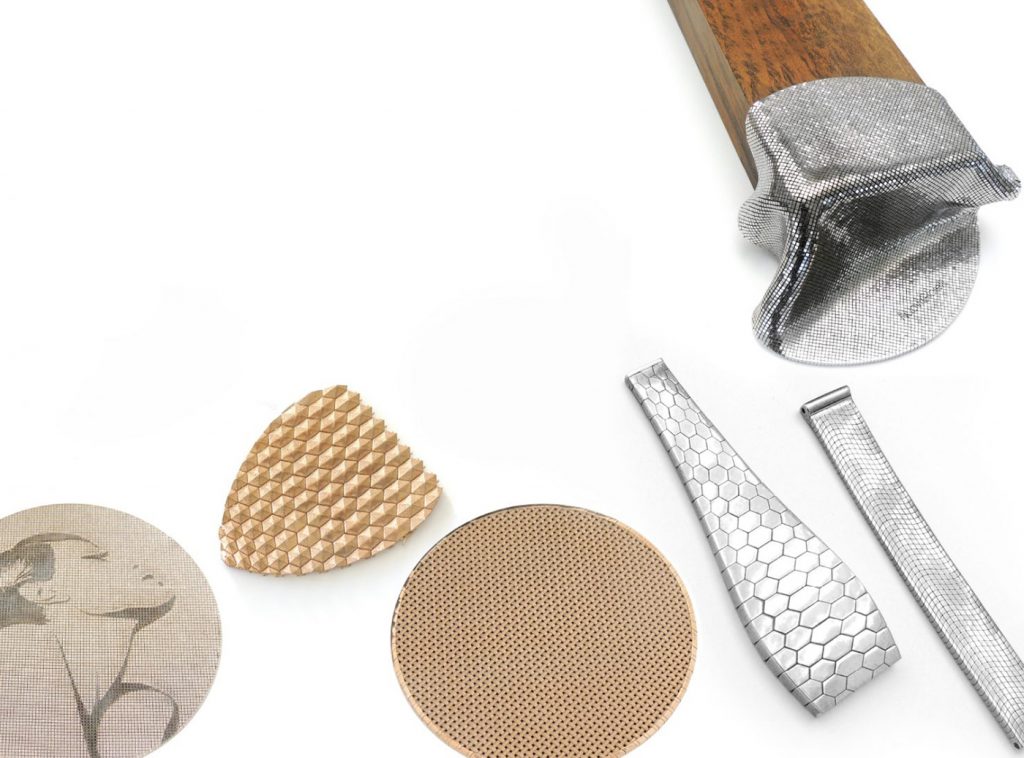
While those in business development were focusing on gold, unexpected attention was beginning to be paid to platinum, which is said to be a ‘match made in heaven’ for Additive Manufacturing, in particular the Laser Beam Powder Bed Fusion (PBF-LB) AM process. Platinum has its own niche in the jewellery industry, most notably as the perfect background – given its light grey colour – to enhance the beauty of diamonds.
From the first investigations, in the middle of the 18th century, platinum generated great interest amongst scientists, but it was only towards the end of the 19th century that the first platinum alloy jewellery was made by Cartier [2]. The delicate design, mainly dictated by the specific weight (60% heavier than gold), initiated an exquisite and unique style which would lead to the classic Art Deco style. Its rarity – thirty times rarer than gold – attracted a very niche market, mainly as an exclusive choice for engagement and wedding rings. It continues to do so [3].
To further encourage interest in this precious white metal, one needs only to look at recent reports. The Platinum Guild International’s 1st quarter report for 2023 recorded a +20% growth in India in the related retail business. It also noted the return of PlatAfrica – a collaboration PGI India and Anglo-American Platinum. This growing use of platinum appears to be a promising trend that would be well served by PBF-LB Additive Manufacturing.
Metal AM, when applied to platinum, offers not only the opportunity to create pieces with higher standards of precision, excellent finishing and fewer challenges than the standard casting process when creating bespoke rings, but also offers the opportunity to explore truly unique solutions which would be impossible to consider with traditional jewellery techniques.
Recently, Progold S.p.A., Italy, launched a competition in partnership with the Platinum Guild and exclusive jewellery brands in an effort to bolster the understanding of the possible breadth of AM applications. In 2023, Chaumet selected and awarded the winners; Bulgari will fulfil this role for the coming year’s contest. Several international schools of jewellery and design are involved in the competition, allowing students to understand the material, learn about the Design for AM (DfAM) workflow, test their creativity, and design jewellery beyond ‘classic’ diamond pieces. The results are new, bespoke designs that can only be manufactured with metal AM (Fig. 3).
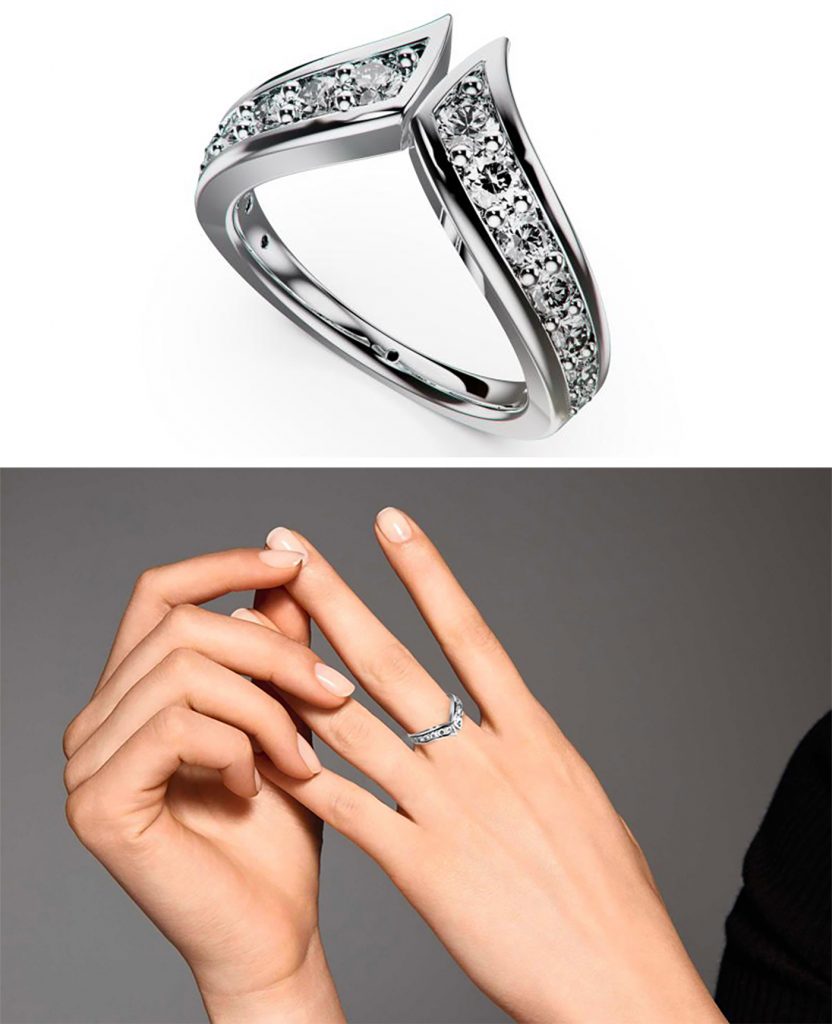
Some of the most popular AM products promoted by Progold are hollow rings, that, thanks to the technology, enable rings across different sizes to have the same weight, backing management and marketing strategies. However, this competition encourages students to explore and take risks with their designs, whilst collaborating with technicians to find the perfect solutions.
The increasing interest in Additive Manufacturing’s place in the jewellery industry was also highlighted at the recent RAPDASA (Rapid Product Development Association of South Africa) conference held in Pretoria. I was invited to this event to speak about metal AM developments in jewellery, highlighting why titanium and platinum group metals could represent the turning point for this innovative solution.
It is my belief that, thanks to platinum in particular, precious metal AM seems to have finally found its own path in the industry, creating a new and original narrative without compromising on quality and design, and without suffering the comparison with the traditional techniques.
This unexpected twist in the story of precious metal AM suggests that it is very likely that it will gain its own place in the jewellery sector. And, by doing this, it is anticipated that other precious metals may follow in platinum’s path, encouraging more exploration in tandem with Additive Manufacturing technology.
Stefania Lucchetta: a new design language tailored around AM
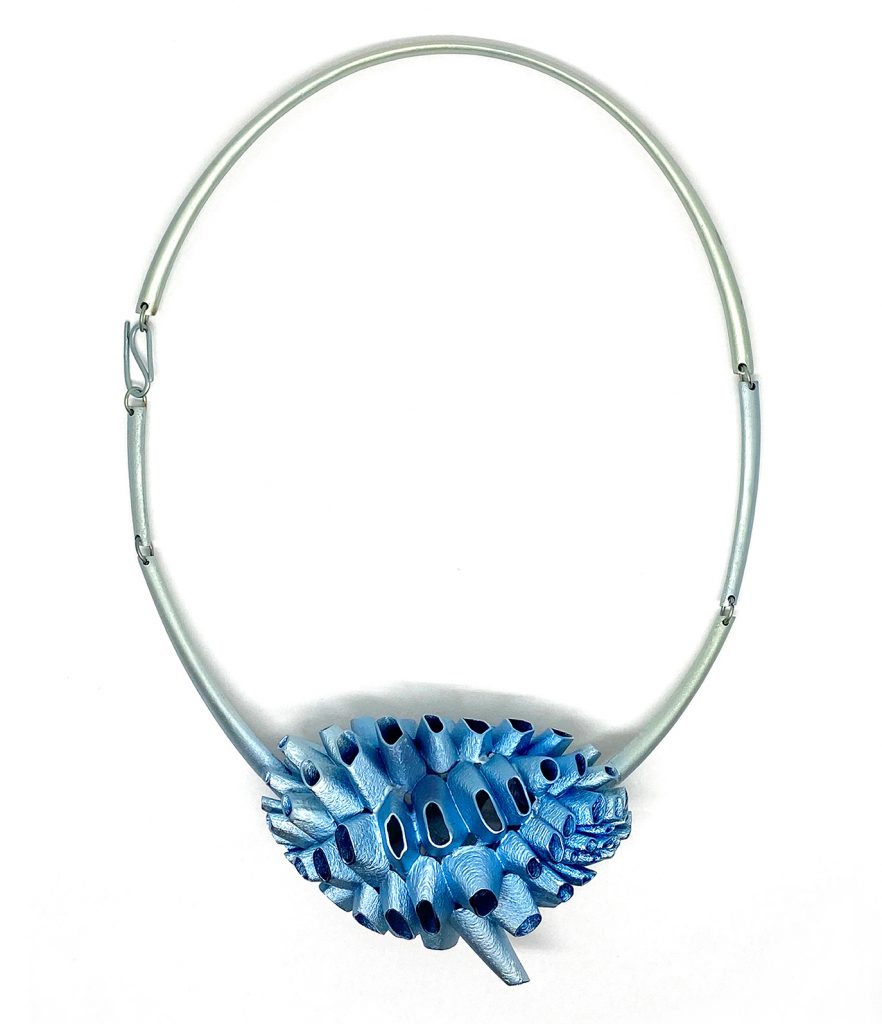
I must confess that my enthusiasm for this technology remains high and I still think that the best is yet to come. My passion for the technology is further enhanced when I look at the work of successful designers using the process. One visionary in the field of AM jewellery in Stefania Lucchetta, whom I can call a friend, as the perfect example of the daring exploration of the aesthetic potential of the process.
In a conversation we had not so long ago, Lucchetta shared that her interest in the potential applications for titanium started towards the end of the 1990s when she saw the first titanium casting machines whilst attending international jewellery exhibitions. She comes from a family of jewellers, although the family business was more focused on an Italian-manufactured traditional 18 kt gold collection. It was, however, her curiosity, often the leitmotiv amongst pioneers, that led her to delve further into the potential of this unique metal for jewellery. Its combination of lightness and hardness fascinated her and confirmed for her that she could design with a different mindset from the one used for gold.
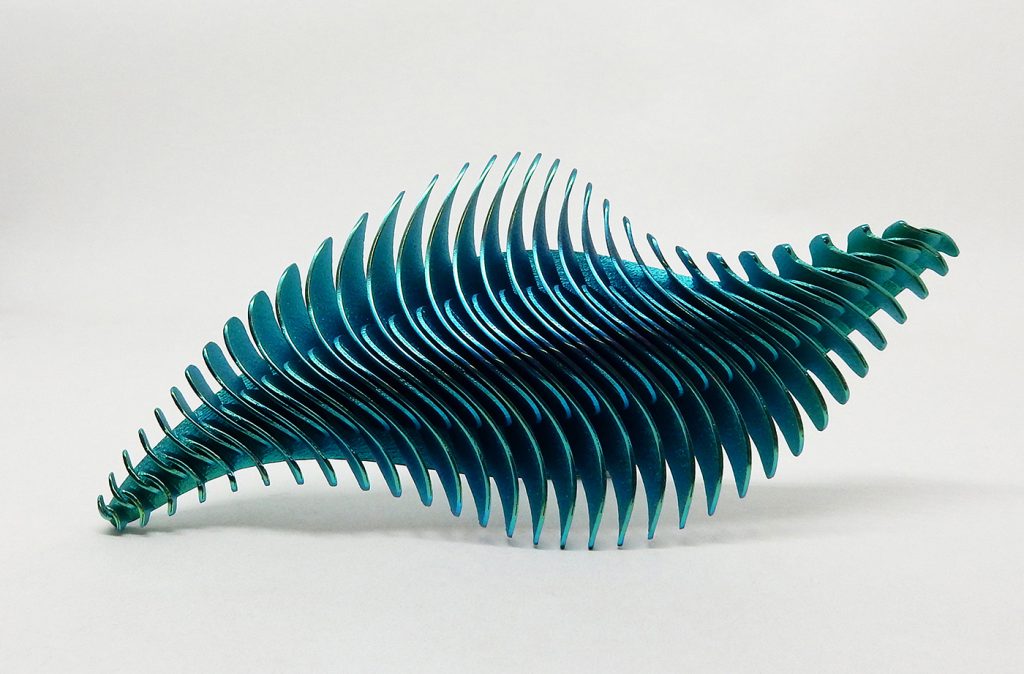
It was metal Additive Manufacturing technology’s ability to fit a high degree of complexity into a compact form that allowed Lucchetta to evolve her research and designs. The first attempts dated back to 2005, when she could replicate her traditionally cast series ‘Crateri’ with the Electron Beam Powder Bed Fusion (PBF-EB) AM with good results.
From this first trial, Lucchetta explored further to match her artistic vision with the capabilities of this technology, giving life to unexpected objects that are able to tell a story of fashion’s future without foregoing wearability and comfort. These explorations have continued, largely adopting through PBF-LB technology, where unfinished surfaces, or surfaces with clear signs of lasered layers, combine with polished surfaces to become part of the creative language, thus supporting new aesthetic codifications. It is often the case that contemporary jewellery designers anticipate and give an opportunity to solutions that could – much later – become the inspiration for more commercial brands.
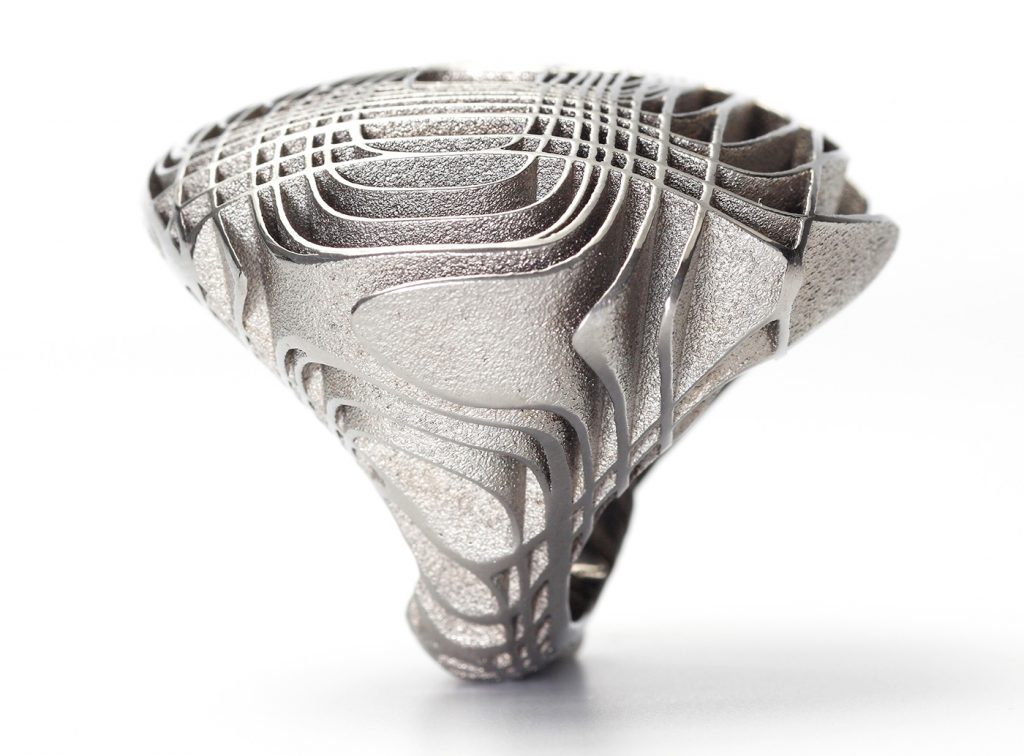
Her collection is presented in international art and contemporary galleries, where her jewellery pieces have clearly set a new path, and those that are following her are clearly recognisable. It is often the case that a design pioneer starts a trend or an aesthetic language, and followers confirm that original intuition with their inspired jewellery. It would be a good ethics practice to always cite the inspirations, though sometimes it is hard to admit that initial influence.
Conclusion
Since my last article, I have also continued my explorations on the feasibility and finishing of precious metal AM. My interests remain focused on meshes and the creation of flexible designs, aspects enabled by the adoption of this fascinating technology. I was pleased to have won a silver award from the Goldsmiths’ Craft and Design Council in the 2021 for my Arabesque bracelet (Fig. 7). Like Stefania Lucchetta, I chose to exploit the technology for aesthetic reasoning – the unfinished surface, later redesigned with smaller links, replicating the feeling and look of velvet fabric in metal.
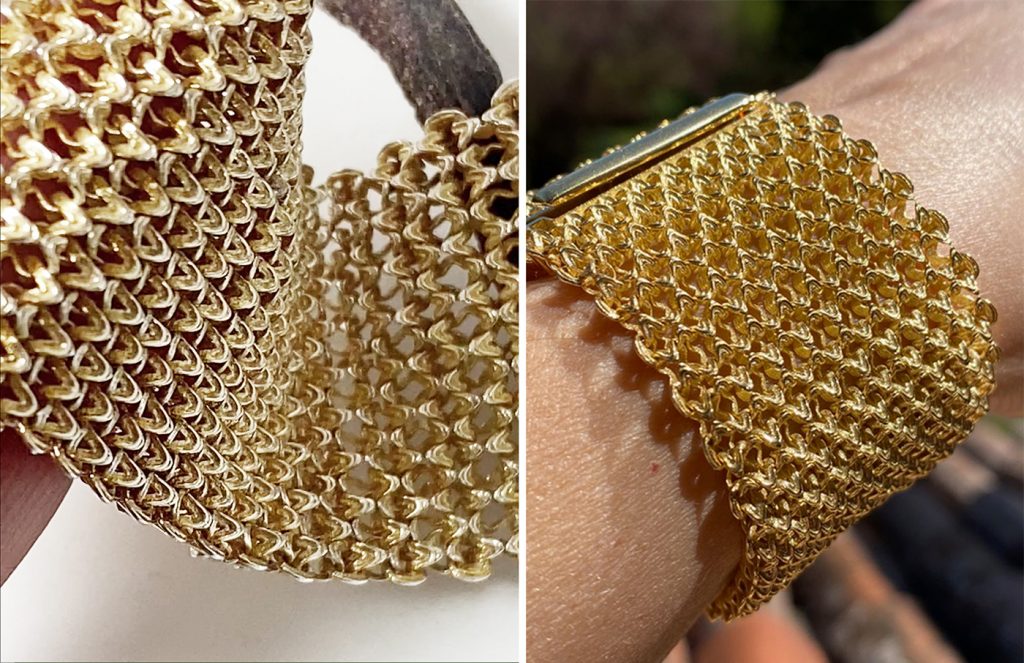
So the journey of precious metal AM in the jewellery industry continues, with those already entrenched in the technology aiming to see more designers engage with this innovative technology to produce an exciting future. It’s all down to the question of time, and the combination of technology and materials. The place of titanium and platinum in the industry are making it more likely that the time is, if not now, soon.
Author
Michela Ferraro is a jewellery expert with over thirty years of passion and international experience in the industry. She is a multi-award winning jewellery designer for precious metal AM, Senior Lecturer in Luxury Jewellery Management at Birmingham City University, visiting Lecturer in Luxury and Sustainability at Sotheby’s Institute of Art, London, and a fervid advocate for ethical and responsible jewellery innovation.
References and resources
[1] ‘Innovation and differentiation: Precious metal Additive Manufacturing in the jewellery sector’, published in the Summer 2020 issue of Metal AM https://bit.ly/47XaFCB
[2] www.gem-a.com/gem-hub/gem-knowledge/platinum-jewellery-history-lang-antiques
[3] www.platinumjewelry.com/why-platinum/all-about-platinum/





